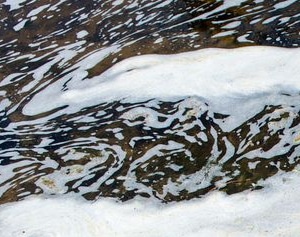
In some welcome news to close out 2020, the Michigan Department of Environment, Great Lakes, and Energy (EGLE) has established more protective PFAS cleanup criteria for drinking water sources.
You might remember that Michigan established more protective PFAS drinking water standards in August 2020. Those drinking water standards are known as Maximum Contaminants Levels or “MCLs,” and will now be applied to the criteria for cleaning up pollution in groundwater used for drinking water. As with the MCLs, the new cleanup standards include five new PFAS compounds, bringing the total number of PFAS regulated in groundwater to seven.
Trying to explain the various types of PFAS pollution in the environment usually involves digging into an acronym salad. But the basic idea is this: There are thousands of PFAS chemicals polluting the environment. Most are similar to one another. Several of these chemicals are associated with nasty health impacts, and many were developed as replacements for the original toxic versions. Scientists are now finding the replacements are also toxic. The seven for which there are now stronger protections are among the specific toxic PFAS most often found throughout Michigan.
By establishing stronger cleanup criteria for PFAS chemicals, the state of Michigan now has protections in place at both the drinking water provider and anywhere a polluter is discharging the PFAS pollutants to groundwater used for drinking water. Better cleanup requirements will shift the responsibility for cleanups to the polluters that made the mess to begin with.
Now, if you’re a logical, rational person that’s been following the PFAS story closely, you might be wondering why establishing drinking water standards doesn’t automatically mean polluters are required to clean up their pollution in drinking water sources. The short explanation is that there are two different laws and regulations that apply. MCLs deal with drinking water being used while Part 201 of the Natural Resources and Environmental Protection Act deals with source water that could be used as drinking water. It’s confusing, but at least for the seven PFAS chemicals in question, state regulations are now consistent in both cases. Having stronger cleanup criteria in place will keep people and wildlife a little bit safer, and that’s some good news in what’s been a very rough year.
Read the EGLE press release here.



